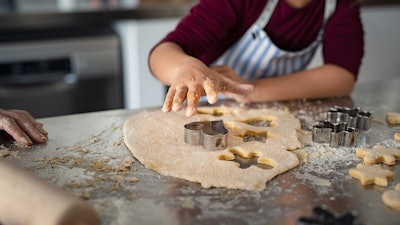
The rest of the world may have their eyes trained on the news to learn the outcome of the next presidential election, but just who will become America's future leader may be better predicted by Ben Clark — and cookie cutters. Yes, you read that right.
Clark works for Ann Clark, the largest cookie cutter manufacturer in the United States. And future presidents aren't the only things he and these baking tools can predict.
Clark believes the sales of these cookie cutters are a cultural barometer that provides insight into America's societal trends and political preferences.
The Company Called Ann Clark
Ann Clark, founded in 1989 by Ann and John Clark, gained prominence through cookie cutter fabrication years ago. Now, their son Ben has taken over.
The company's dual strategy of variety and trend observation has won them the edge over similar manufacturers that import their products from foreign sources like China. Nowadays, Ann Clark's cookie cutters constitute approximately 65% of the market, amounting to almost $12 million in yearly sales.
Ann Clark also sells baking ingredients and kitchen tools and provides bakers with recipes and kitchen tips online.
Cookie Cutters and Cultural Shifts
Clark realized he could measure cultural shifts or pop culture trends by monitoring Ann Clark cookie cutter sales.
In 2016, Clark noticed that the ratio of Hillary Clinton to Donald Trump cookie cutters sold reflected the distribution of the election votes.
His cookie cutter predictions aren't just restricted to politics. Aligning with the launch of Taylor Swift's massively popular Eras tour, Clark noted an influx of sales for music note-shaped and guitar-shaped cutters. Reflecting the hype surrounding the summer blockbuster Barbie, lipstick and convertible car shapes were moving quickly in July.
Ann Clark's traditional gingerbread men and Valentine's Day hearts remain timeless bestsellers, but the company works to keep its finger on the pop culture pulse. Clark uses the valuable insight provided by search engines. While anyone at Ann Clark can submit ideas for new shapes, production is usually guided by what people search online.
For example, with the rise of the "cottagecore" aesthetic among Gen Z and millennials, gnome cookie cutter sales also soared.
The company anticipates an uptick in sales for designs such as mushrooms and peace symbols, in line with rising nostalgia for the 1960s and 1970s. Now that many are jet-setting again, the company expects a travel-related cookie cutter sale surge.
While Christmas trees and graduation caps are steady sellers, sometimes the unexpected happens. Random cutter shapes, like hexagons, might spike in popularity. Why? Because those cookie cutters make hamantaschen during Purim, a springtime Jewish holiday. The increase in circles and moons? Clark attributes that flux to Ramadan.
With diverse products, ranging from Harry Potter cookie cutters to llamas, Ann Clark has something for everyone. The company also features shapes that match the Lisa Frank aesthetic for those into quirky 1990s kitsch.
Ben Clark brings Ann Clark a new level of success by eyeing trends and noting what sells and what doesn't. Their latest strategy involves smaller product drops, with which the company can monitor product demand.
International Culture With Cookie-Cutters
Ben Clark doesn't just gather data from the shores of the United States, either. Ann Clark went international in 2018, and their clever cutters are now procurable in Europe, Japan, and Brazil. The units sold provide the company with data that will later contribute to cutter manufacture and export.
In the United Kingdom, for instance, Clark observed an uptick in the popularity of teddy bear-shaped cookie cutters. Childhood nostalgia appears strong amongst the Brits, as this trend might represent the affection many have for plush toys of their youth.
During his time in Germany, Clark noticed a surge in the sales of goose-shaped cookie cutters as St. Martin's Day approached as roast goose is a dish commonly served during St. Martin's Day celebrations.
The Future of the Cookie-Cutter Industry
Given the slump in sales from November 2022 to October 2023, the future of cookie cutter purchases remains uncertain. While these unique baking tools can predict cultural moments, cookie cutter popularity among consumers isn't as easy to forecast.
"We are all about instant gratification now," Clark told the New York Times.
Technology also challenges companies like Ann Clark. While their cutters come in a wide range of shapes made from materials that can last a lifetime, the company's adherence to strict production specifications can be limiting. On the other hand, the rise in 3D printing allows competitors to produce plastic cookie cutters on demand, offering even more customized shapes.
For now, where there is a baking recipe, an Ann Clark cookie cutter is within reach, no matter how niche.
How the Cookie Crumbles
Ann Clark's cookie cutters are more than baking utensils; each cutter is a unique lens into a nation's culture. As people purchase cookie cutters to make baked goods, these humble yet quirky gadgets decode what excites and astounds the masses.
While no cookie cutter will shape the future, it's exciting to anticipate which cookie shapes will come and go in the coming years.
This article was produced by Media Decision and syndicated by Wealth of Geeks.






















